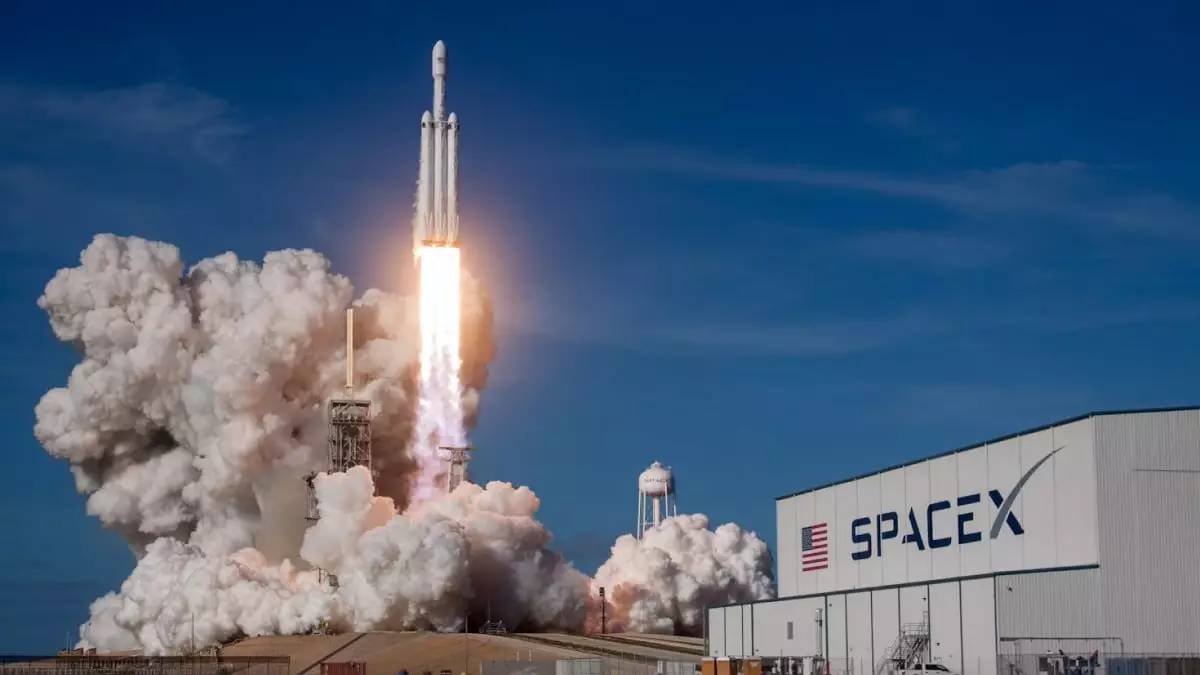In an extraordinary leap for commercial space exploration, billionaire entrepreneur Jared Isaacman and SpaceX engineer Sarah Gillis recently accomplished a groundbreaking feat by becoming the first non-professional astronauts to engage in a spacewalk. This landmark event occurred on September 12, 2024, when the duo exited the SpaceX Dragon capsule, positioned an impressive 435 miles above the Earth’s surface. Funded by Isaacman as part of the Polaris Dawn mission, this venture stands as a pivotal moment in space history—breaking the mold that has predominantly seen government-trained astronauts conducting spacewalks.
Emerging from the capsule at approximately 11:52 BST, Isaacman was the first to make the audacious step into the void of space, ensuring his extravehicular activity (EVA) suit was functioning correctly. Following his lead, Gillis conducted evaluations while sharing their live experiences, making the moment even more remarkable for audiences back on Earth. These newly engineered EVA suits featured cutting-edge technology, including a heads-up display designed to enhance safety and operational capabilities during the spacewalk—a clear testament to the strides being made in suit design for commercial space travel.
Before their historic venture, the pair underwent rigorous preparations, including two days of “pre-breathing” to mitigate the risks associated with decompression sickness. Unlike traditional spacewalks which utilize airlocks to transition between the spacecraft and the cosmos, the SpaceX Dragon was depressurized to mimic the external environment, introducing unique challenges and highlighting the innovative nature of Isaacman’s undertaking. Research scientist Dr. Simeon Barber from the Open University underscored the significance of this approach, reinforcing SpaceX’s commitment to pioneering new methodologies in space exploration.
The successful execution of this private spacewalk is more than just a personal achievement for Isaacman and Gillis; it serves as a beacon of progress for the commercial space industry. Their mission signifies a shift toward greater private sector involvement in exploration beyond Earth, suggesting that the barriers to accessing space may gradually diminish in the future. While the financial aspect of such missions presents considerable challenges, initiatives like Polaris Dawn lay the groundwork for more democratized access to outer space.
Moreover, this mission has set a new record for the most individuals present in the void of space simultaneously—an achievement that amplifies the impact of private enterprises within the domain historically dominated by national space agencies. As the scope of space exploration expands into the hands of entrepreneurs, the boundaries of human capability in space are being pushed further, suggesting a promising future of increased collaboration between public institutions and private enterprises.
The spacewalk performed by Isaacman and Gillis marks not only a monumental achievement for non-professional astronauts but also a significant milestone for the evolution of commercial space missions. The innovative strategies employed during the Polaris Dawn mission demonstrate how private sector players can reshape space exploration, potentially leading to broader participation in humanity’s quest to explore the cosmos. As these barriers continue to fall, the dream of space travel may one day become a reality for many, redefining our connection with the universe.

Leave a Reply